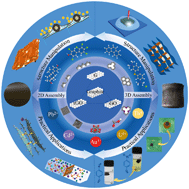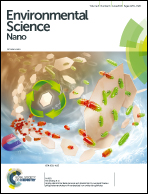Application of graphene-based materials in water purification: from the nanoscale to specific devices
Abstract
Graphene-based nanosheets (GBNs) are 2D atomically thin nanomaterials with extraordinary physicochemical properties in terms of tuneable surface properties, controllable structure and easy modification. The emerging class of graphene-based materials has attracted substantial research interest over the past decades, particularly in water purification. Isolated GBNs are considered excellent adsorbents for pollutants because of their large surface area, strong π interactions and abundant functional groups. Furthermore, the constructed multidimensional macrostructure shows great potential in practical environmental remediation. Graphene-based materials provide a novel approach to challenging environmental issues. Considering the rapid development of graphene-based materials, this review serves as a valuable platform to summarize previous investigations, current developments and future opportunities of graphene-based materials in water purification. The contents of this review mainly include synthetic methods, structural properties, adsorption performance of GBNs and the structural regulation and practical application of 2D and 3D graphene-based macrostructures. Given that, the environmental friendliness of GBNs, considering the whole cycle from synthesis to application, is evaluated.



 Please wait while we load your content...
Please wait while we load your content...